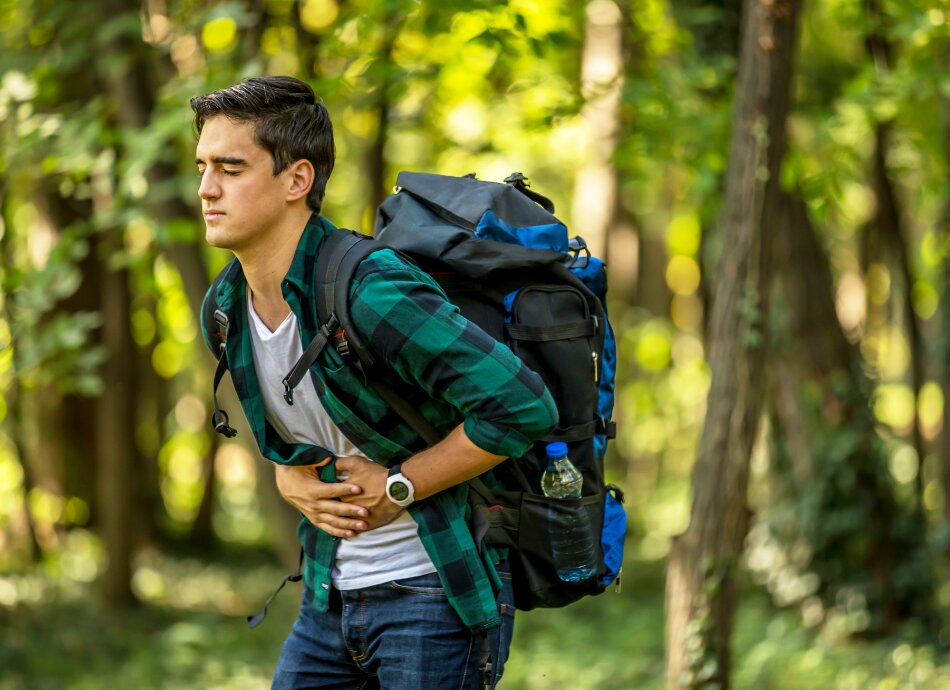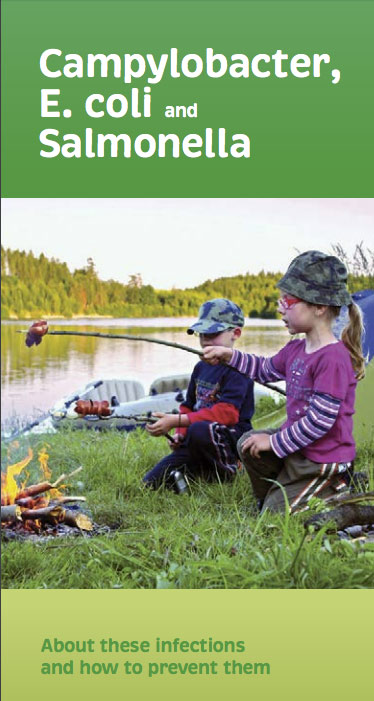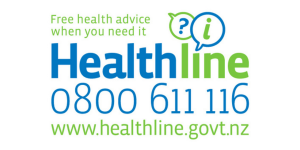Wishing everyone a safe and happy Christmas and New Year – Meri Kirihimete from the Healthify team.
Salmonella
Key points about salmonella
- Salmonella infection is a type of gastroenteritis (food poisoning).
- Symptoms include diarrhoea and stomach cramps that usually appear 6 to 72 hours after becoming infected.
- Good hygiene can help stop it spreading.
- Most people recover from salmonella without treatment.
- Staying hydrated, resting and avoiding spreading the infection to others are important for managing a salmonella infection.

Salmonella is an infection affecting your gut. It’s a type of gastroenteritis or food poisoning that can give you stomach cramps, diarrhoea (runny poo), nausea (feeling sick) and vomiting (being sick).
Most people won’t need treatment, you should recover within a week but it might take up to 10 days.
It’s important to wash your hands well, clean surfaces and be careful with food handling and preparation to avoid passing it on to others.
You can get salmonella from foods contaminated with the bacteria, such as meat, chicken, eggs, milk and fruit and vegetables.
People or animals infected with salmonella can pass it on in their faeces (poo) into soil, water and food. The bacteria can also contaminate (make unsafe) surfaces such as toys, bathroom taps or doors and nappy change tables. Salmonella is often spread to humans in the following ways:
- Eating contaminated food: This includes undercooked meat, especially chicken, or contaminated raw fruit and vegetables. Contamination of food can also happen when you don't wash your hands properly after going to the toilet or changing the nappy of an infected pepi.
- Cross-contamination: Salmonella can spread in your kitchen by cross-contamination from raw chicken meat, including juices from the meat, to other food, utensils (eg, chopping boards), food contact surfaces and the hands and clothing of people handling the food.
- Drinking contaminated water: Drinking contaminated water is responsible for a number of outbreaks globally, such as contamination of water from sewage outflow systems, waste run-off from grazed pasture. You can also get salmonella from swimming or playing in contaminated water, such as rivers and lakes.
Direct handling of animals: Salmonella is found in the poo of many animals, including farm animals and household pets. It can be spread by handling infected animals and not washing your hands afterwards.

Image credit: Canva
People more at risk of getting salmonella are:
- travellers to developing countries where sanitation and food hygiene may be less strict
- farm workers
- meat processing workers and people who handle raw meat.
Note: There are different strains of Salmonella bacteria. Salmonella typhi causes an infection known as typhoid which can cause serious illness if it's not treated.
Salmonella infection is a form of gastroenteritis (gastro). Symptoms of salmonella can include diarrhoea (runny poo), stomach pain or cramps, and nausea and vomiting (feeling or being sick).
Symptoms usually appear 6 to 72 hours after becoming infected. The symptoms usually last 1 to 7 days, but if your infection is more severe they can last up to 10 days.
Most cases of gastro don't need special investigations. If your symptoms are severe (really bad) or ongoing, or your healthcare provider thinks you might have salmonella, you may be asked to provide a stool (poo) sample. This can be tested in the laboratory for salmonella and other bacteria.
Salmonella is a notifiable disease. This means if you're found to have salmonella, your healthcare provider will inform your local public health team. They may contact you to find out how you picked up the bacteria. This helps them trace the source of infection to reduce the risk of a large outbreak.
Most people will recover without the need for any special medication. You can help your recovery by drinking plenty of fluids to avoid getting dehydrated. Take extra care with young children and older adults who can become dehydrated very quickly. Eat as you feel able – be guided by your appetite. Start with bland food such as toast or rice and small, light meals.
Antibiotics
Antibiotics are not commonly needed to treat salmonella infections. They have little impact on how long you are sick or how bad your symptoms are. Antibiotics may be considered if your symptoms are severe or go on for a long time. You may also be prescribed antibiotics if you are at high risk of complications, eg, because you’re hapū (pregnant) or have a weakened immune system.
Medicines for diarrhoea
Medicines for diarrhoea, such as loperamide, are not routinely recommended, but may be considered in some circumstances. They must be avoided if you have blood and mucus in your poo. This can make things worse as it can prolong the diarrhoea and there is the risk of a serious complication called toxic megacolon. Medicines for diarrhoea are also not recommended for use in children under 12 years of age. Before taking them, check with your healthcare provider if they’re safe for you.
Check with your healthcare provider first, but most people will be asked to stay away from school, early childhood centres or work until 48 hours (2 days) after the symptoms have gone. and do not have visitors from outside the family. However, as salmonella infection is a notifiable disease (see diagnosis above) you will need to check with your healthcare provider first.
Also, don't swim in pools (private or public) while you have the infection and for at least 2 weeks after your symptoms have gone.
There are several things you can do to help prevent getting a salmonella infection.
Wash your hands
Wash your hands thoroughly by using plenty of soap and hot water for at least 20 seconds, cleaning between your fingers and under your fingernails, rinsing well and drying your hands on a clean dry towel or paper towel. Do this:
- before and after preparing food
- after going to the toilet or changing a baby’s nappy
- after caring for people who are ill
- after playing or working with animals.
Clean surfaces and toys
Regularly clean and disinfect toys and surfaces. These may become contaminated with Salmonella bacteria, eg, if someone in your family has been infected, or if you have infected pets in your house.
Food preparation
Take care when preparing food – cook food well and wash your hands frequently and properly. Use different chopping boards, trays, utensils and plates when preparing raw foods and ready-to-eat food. If you only have 1 chopping board, wash it well in hot soapy water before you use it again.
- Clean all food preparation areas, utensils and equipment thoroughly. Wash raw vegetables properly.
- Cook raw foods well and leftovers until steaming hot. Make sure that minced meat, chicken and sausages are cooked thoroughly until juices are clear. Thorough cooking of food kills Salmonella.
- Cover all foods in the fridge, cupboard and outdoors. Separate and store raw and cooked foods so there is no chance of cross-contamination.
- Chill store ready-to-eat food between 0 and 4°C. Any leftover cooked food should be covered and chilled (within 2 hours).
Read more about food safety.
Water
If your water source is believed to be contaminated, you must boil all water for 1 minute before drinking, making up infant formula, food preparation and cleaning teeth. Read more about water collection and safe household water(external link).
The following links provide further information about salmonella. Be aware that websites from other countries may have information that differs from New Zealand recommendations.
Salmonella(external link) Health New Zealand | Te Whatu Ora
Food safety at home(external link) Ministry for Primary Industries, NZ
Salmonella(external link) Centers for Disease Control and Prevention, US
Brochures
Campylobacter, E coli and salmonella(external link) HealthEd, NZ, 2024
Infectious diseases(external link) HealthEd, NZ, 2023
Diarrhoea and vomiting (gastroenteritis)(external link) Health New Zealand | Te Whatu Ora, 2025
References
- Campylobacter, E. coli and salmonella(external link) HealthEd, NZ, 2024
- Salmonella(external link) Health New Zealand | Te Whatu Ora
- Salmonellosis(external link) Te Mana Ora | National Public Health Service, NZ, 2023
- Infectious gastroenteritis(external link) Auckland Region HealthPathways, NZ, updated 2025
- Assessment and management of infectious gastroenteritis(external link) BPAC, NZ, 2009
Salmonellosis(external link) Te Mana Ora | National Public Health Service, NZ, 2023
Salmonella gastroenteritis(external link) Patient UK
Brochures

HealthEd, NZ, 2025

HealthEd, NZ, 2023
Credits: Healthify editorial team. Healthify is brought to you by Health Navigator Charitable Trust.
Reviewed by: Dr Grace Lee, FRNZCGP and Clinical Educator
Last reviewed:





